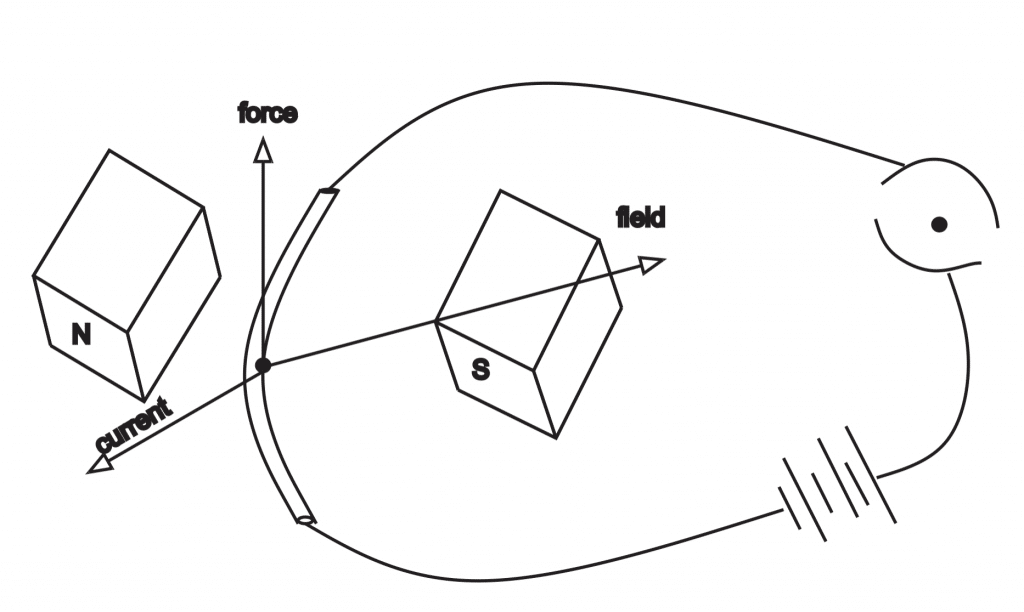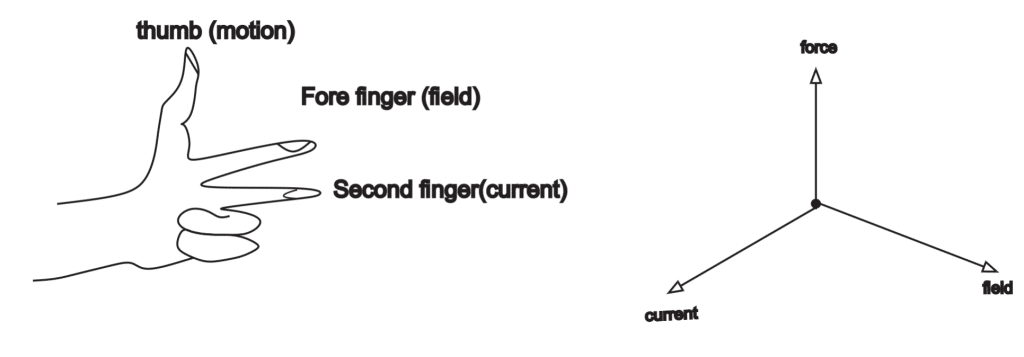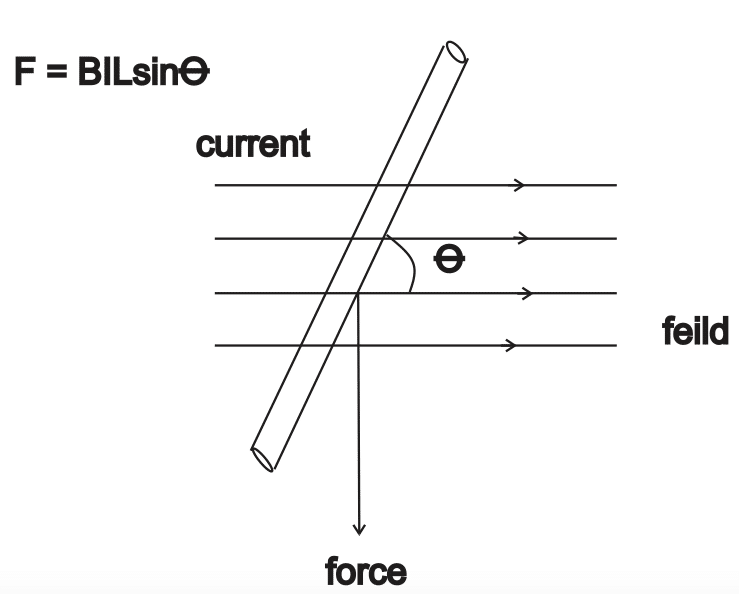Electromagnetic Field
Electromagnetic field is a field representing the joint interaction of electric and magnetic forces.
Force on a Current Carrying Conductor in a Magnetic Field

When a thin metal strip is held in the gap between the poles of a powerful magnet and the key closed as shown, the current flows through a metal strip causing it to move upward. The direction of force acting on the conductor depends on the direction of
- Magnetic field
- Current flowing
If the direction of the magnetic field changes by interchanging the poles of the magnet, the metal strip is pushed downward.
Studies have shown that reversing the direction of current and magnetic field at the same time has no effect on the effect of force.
Direction of Force or Motion
Fleming’s right hand rule is used to find the direction of force or motion of a current carrying conductor in a magnetic field.
It states that if the right hand is held so that the first three fingers are mutually at right angles to each other, the forefinger points in the direction of the magnetic field, the second finger point in the direction of the current and the thumb in the direction of motion the conductor.

The diagram of the force (F) experienced can be given as F = BILsinθ

B = magnetic flux density
I = current
L = length of conductor
θ = angle of conductor with the field
When θ = 90°
F = BIL
Flemings Right Hand Rule is used for generators while Flemings Left Hand Rule is used for electric motors.
Why Force is experienced by a Current Carrying Conductor in a Magnetic Field
The reason is that there is increase in the magnetic flux densityDensity is the measurement of how tightly a material is packed together i.e. how closely the particles are packed in the material. The tighter the material is packed the more its... More on the left and a decrease of it on the right hand side of the conductor; force it to move from left to right.
Force on a Rectangular Coil
When current flows through a rectangular coil placed in a magnetic field produced by a strong magnet, equal and opposite forces are exerted on the sides of the coil to cause it to rotate or turn.
Using Fleming’s left hand rule the direction of the coil turn is found.
Two equal and opposite forces turn to form a couple and the effect of the couple is to turn the coil in the clockwise direction. But if the direction of the coil is reversed, it turns in the opposite direction; the force rotating the coil can be increased by
- Increasing the current in the coil
- Using a powerful magnet
- Increasing the number of turns of the wire in the coil
- Increasing the area of the coil
- Shaping the poles of the magnet spherical to make magnetic field radial
Example
A straight conductor of length 0.60m moves in a magnetic field of flux density 1.57T when a current of 10A flows through it. Calculate the
- The force moving the conductor when it is inclined at an angle of 30° to the magnetic field
- The maximum force acting on the conductor in the magnetic field
Solution
(i) F = BILsinθ
= 1.5 × 10 × 0.60 × sin 30°
= 1.5 × 0.6 × 0.5
= 4.5N
(ii) Maximum force (when θ = 900)
F = BIL
=1.5 × 10 × 0.6
= 9N



Responses